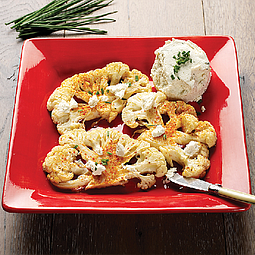Taming the Stuff in Your Home
March 14, 2024 at 2:55 p.m.
...by Christina Clem, AARP Washington Communications Manager
Having too much stuff can impede people from relocating or getting health care into their homes. We love to think about decluttering and organizing, but we don’t always love to do it. Decluttering in real life often feels overwhelming - like there’s no time to go through the mugs, memorabilia, furniture, books, papers and accessories that find a way to pile up in our homes.
To some generations, stuff is important and there is a general assumption that the stuff will be passed down to younger generations. For the older generations, there is a great deal of pride in belongings that have been gathered from hard work and are associated with special memories, but younger generations like Gen X and Millennials, don’t feel the same. And, while it is hard to hear, the more likely situation is your kids and grandkids don’t want your stuff.
However, a few small steps can help jump-start the effort and make it feel more manageable - and the result may even improve your mental health just as much as your home.
Plan ahead
Your home is filled with kitchenware, linens, photos and tools that took a lifetime to accumulate. It’s going to take time to go through them and decide what to keep. Decluttering can take several weeks — or longer — and getting a head start will allow you to go through things carefully and decide what to keep and what to toss or donate.
Go room by room
Take an organized approach. It might be tempting to declutter a few drawers in the kitchen, a closet in the bedroom and a corner in the garage. But professional organizers suggest finishing a single room before moving on to the next space.
Make easy decisions first
Don’t start the decluttering process by going through photographs, collections or mementos. You’ll spend longer going through treasured items and it’ll be harder to make decisions about things that are linked to memories and strong emotions. Instead, start with the easiest decisions. Getting rid of expired foods, old utility bills or stained, ill-fitting clothing will lead to a huge sense of accomplishment and provide the motivation to keep going.
Skip the ‘maybe’ pile
Establishing a “maybe” pile is a mistake. It tends to be the biggest pile — and all you’re doing is putting off a hard decision. Instead, separate items into keep, donate, sell or toss piles.
Get your family involved
Before keeping your wedding china or other sentimental items because your family members may want them someday, ask for their input. While they might not want 12-piece place settings or heavy antiques, you might be surprised at the things that they would like to keep. Sometimes it might be something you least expected, such as a favorite holiday ornament or a knickknack that reminds them of a family trip.
Call in the pros
Decluttering can be hard to go at alone. If it’s too much, hire a professional. They can help you create a timeline, hold you accountable and help you decide what to keep and what to give away.
The National Association of Senior and Specialty Move Managers at www.nasmm.org can help you find a senior move specialist in your area. AARP Washington also has a group of trained volunteers who can lead workshops on decluttering and downsizing. Find out about our available presentations by visiting www.aarp.org/WASpeakersHub.
To some generations, stuff is important and there is a general assumption that the stuff will be passed down to younger generations. For the older generations, there is a great deal of pride in belongings that have been gathered from hard work and are associated with special memories, but younger generations like Gen X and Millennials, don’t feel the same. And, while it is hard to hear, the more likely situation is your kids and grandkids don’t want your stuff.
However, a few small steps can help jump-start the effort and make it feel more manageable - and the result may even improve your mental health just as much as your home.
Plan ahead
Your home is filled with kitchenware, linens, photos and tools that took a lifetime to accumulate. It’s going to take time to go through them and decide what to keep. Decluttering can take several weeks — or longer — and getting a head start will allow you to go through things carefully and decide what to keep and what to toss or donate.
Go room by room
Take an organized approach. It might be tempting to declutter a few drawers in the kitchen, a closet in the bedroom and a corner in the garage. But professional organizers suggest finishing a single room before moving on to the next space.
Make easy decisions first
Don’t start the decluttering process by going through photographs, collections or mementos. You’ll spend longer going through treasured items and it’ll be harder to make decisions about things that are linked to memories and strong emotions. Instead, start with the easiest decisions. Getting rid of expired foods, old utility bills or stained, ill-fitting clothing will lead to a huge sense of accomplishment and provide the motivation to keep going.
Skip the ‘maybe’ pile
Establishing a “maybe” pile is a mistake. It tends to be the biggest pile — and all you’re doing is putting off a hard decision. Instead, separate items into keep, donate, sell or toss piles.
Get your family involved
Before keeping your wedding china or other sentimental items because your family members may want them someday, ask for their input. While they might not want 12-piece place settings or heavy antiques, you might be surprised at the things that they would like to keep. Sometimes it might be something you least expected, such as a favorite holiday ornament or a knickknack that reminds them of a family trip.
Call in the pros
Decluttering can be hard to go at alone. If it’s too much, hire a professional. They can help you create a timeline, hold you accountable and help you decide what to keep and what to give away.
The National Association of Senior and Specialty Move Managers at www.nasmm.org can help you find a senior move specialist in your area. AARP Washington also has a group of trained volunteers who can lead workshops on decluttering and downsizing. Find out about our available presentations by visiting www.aarp.org/WASpeakersHub.





